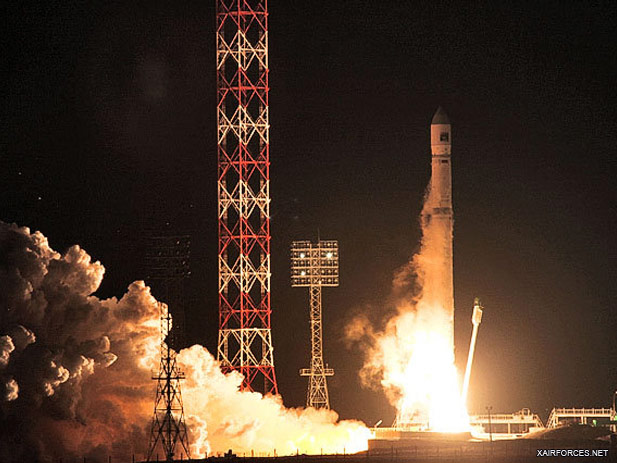
Russian Spacecraft Turned Space Junk to Crash Soon

A Russian spacecraft designed to burnish the nation's faded space glory in a mission to one of Mars' moons has turned into one of the heaviest, most toxic pieces of space junk ever.
It will come crashing down to Earth in just a few days.
The Russian space agency Roscosmos' latest forecast has the unmanned Phobos-Ground probe falling out of Earth's orbit Sunday or Monday, with the median time placing it over the Indian Ocean just north of Madagascar. It said the precise time and place of its uncontrolled plunge can only be determined later, and unless someone actually spots fiery streaks in the sky, no one may ever know where any surviving pieces end up.
Space experts agree it's unlikely to pose big risks.
At 13.2 metric tons (14.6 tons), the Phobos-Ground is one of the heaviest spacecraft ever to plummet to Earth, considerably larger than the two defunct satellites that fell to Earth last fall and landed in the water. It's cylindrical and about the size of a van.
Roscosmos predicted that only between 20 and 30 fragments of the Phobos probe with a total weight of up to 200 kilograms (440 pounds) will survive the re-entry and plummet to Earth.
It's the third satellite to crash out of the sky in under five months: An old NASA 6-ton atmospheric research satellite came tumbling down in September, and a 3-ton German science satellite followed suit in October. But both were well past their prime.
Russia's Phobos-Ground probe is still a mere babe. It was launched in November, and a glitch left it stranded in orbit around Earth instead of bound for Mars to collect soil samples.
"What's different about this re-entry is that it's not a re-entry of an old, inert satellite that just was expected for years. It's something that is coming down because of an accident ... for me, that puts it in a different category," said Jonathan McDowell of the Harvard-Smithsonian Center for Astrophysics in Cambridge, Mass.
Another striking difference is the 11 metric tons (12 tons) of highly toxic rocket fuel aboard Phobos-Ground, accounting for the bulk of its weight for the long journey to the Martian moon of Phobos. This makes it potentially the most toxic spacecraft to fall ever.
Roscosmos insists all the fuel will burn in the atmosphere and pose no danger, and some experts in Russia and the West share that forecast.
And if it's any consolation, both of the two previous uncontrolled satellites harmlessly showered fragments over water.
"The fuel indeed poses lethal danger in case of close contact, but I haven't heard of a single case of any civilians poisoned by rocket fuel from all the derelict satellites and failed rockets throughout the space era," said Igor Lissov, an independent Moscow-based space observer. "The objective reality is that it burns on re-entry. There is no reason to panic."
Some experts theorized, however, that part of the fuel might have frozen in the cold of space and could survive the fiery descent, posing a strong threat if it spills over populated areas. Such fears prompted the United States to shoot down its USA-193 spy satellite with a Navy missile in 2008.
Some botched Russian rocket launches in the past have showered fragments over populated areas in Siberia and neighboring Kazakhstan.
Source: By Vladimir Isachenkov, Moscow - 12 January , 2012 - Associated Press (AP)
Photo: In this Wednesday, Nov. 9, 2011 file photo, the Zenit-2SB rocket with the Phobos-Ground probe blasts off from its launch pad at the Cosmodrome Baikonur, Kazakhstan. Some of the recent failures of Russian spacecraft may have been caused by hostile interference, Roscosmos chief Vladimir Popovkin said. Popovkin made the comment when asked about the failure of the unmanned Phobos-Ground probe, which was to explore one of the Mars twin moons, Phobos, but became stranded while orbiting Earth after its Nov. 9 launch. The spacecraft is expected to fall to Earth around Jan. 15. (AP Photo/File)
(12.01.2012)
|